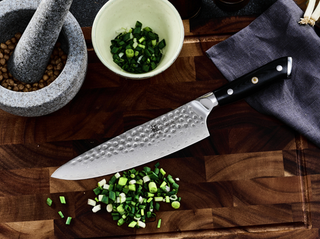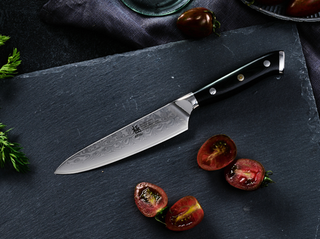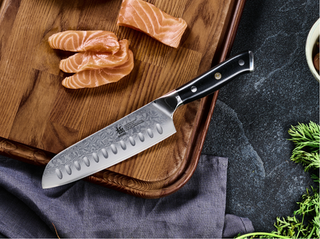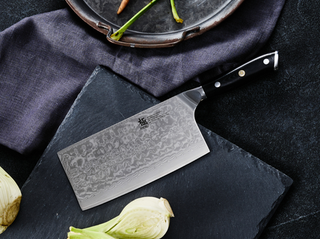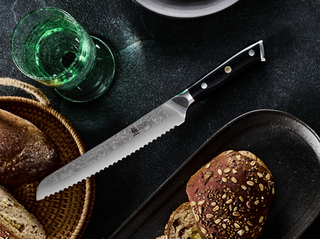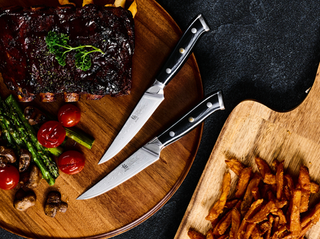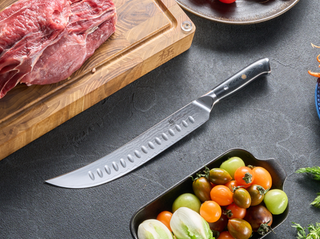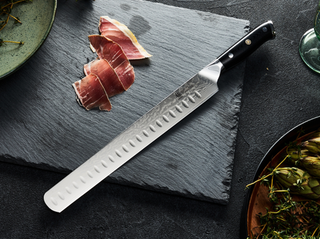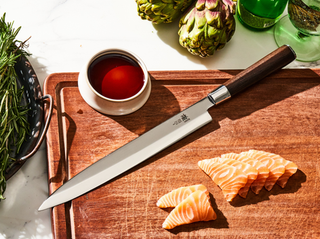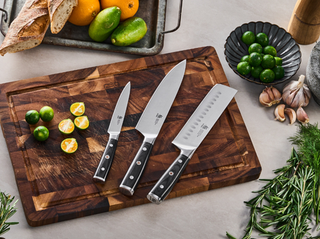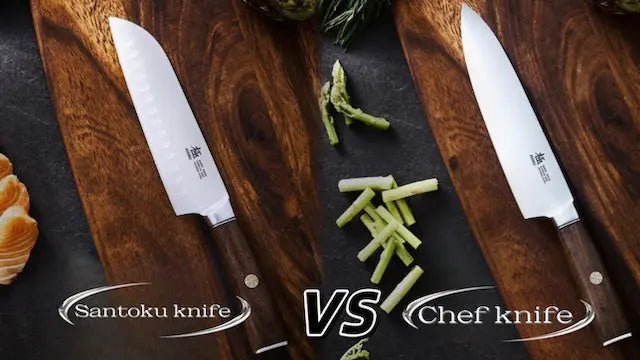When browsing online stores for knives, we often come across santoku knives and chef's knives. This can be confusing - what are the differences between these two types of knives?
If you're not familiar with santoku and chef's knives, this guide will explain the key differences between the two and how to use them properly. This will help you decide which type of knife is best suited for your needs.
what is santoku knife vs chef knife
Both the chef's knife and the santoku knife are considered to be versatile, all-purpose knives for the kitchen. They can be used for slicing meat, chopping fruits and vegetables, mincing herbs - pretty much anything. However, the different shapes and weights of these knives require slightly different cutting techniques.
To understand the key differences, let's start with the basics. A chef's knife and a santoku knife are similar in many ways, but have some distinct differences that impact how they handle.
what is santoku knife
The Santoku knife originates in Japan. Essentially, it is the Japanese version of a chef's knife. However, the santoku is smaller and lighter than a chef's knife.
The Santoku knife has a weight and balance between a chef's and a paring knife. It has a sheep's foot blade with no sharp tip. The blade is short and wide, with a flat edge that curves up slightly for the last few centimeters from the edge to the spine.
This shape and size allow for more refined slicing, and the vertical up and down rocking motion used for mincing, without needing to lift the blade off the cutting board between cuts. The santoku's design makes it well-suited for precise, controlled chopping tasks.

what is chef knife
The origin of the chef' knife dates back to Germany and France. It is highly versatile - one chef's knife can complete most of the cutting tasks required for Western cuisines.
The lengthy, broad blade of the chef's knife makes it handy for general chopping, dicing, and slicing.
However, it is not as well-suited for more delicate work like boning meat, slicing bread, chopping herbs, peeling skins, etc. For intricate work requiring accuracy, other smaller knives tend to be better choices.

What's the difference between a santoku and a chef knife?
I'm sure many of you would like to know how these two types of knives differ in detail. Next, this article will compare the differences between Santoku knives and chef knives from eight parts.
| Feature | Santoku Knife | Chef's Knife |
| Blade | Thinner, lighter, lacking a pointed tip | Thicker, heavier, with a pointed tip |
| Length | 5-7 inches long | 8-10 inches long |
| Tips | Sheep's foot tip, no sharp point | Sharp pointed tip |
| Cutting Action | Up-and-down chopping | Rocking motion |
| Best Use | Precise slicing, mincing | General chopping, slicing, dicing |
| Edge | Flat ground | Usually curved edge |
| Origin | Japan | Germany/France |
Knife blade
Santoku blades tend to use lower grade carbon steel or stainless steel. They are thinner, lighter, and better for precise cuts compared to chef's knives. The pointed tips of Santoku knives are more rounded and blunt.
Chef's blades are often made of hardened steel or powdered steel that is more durable. They have thicker, sharper blades designed for general use rather than the more precise cuts of a santoku. Chef's knives have a finer, sharper tip for intricate knife work. So you need to be careful when using chef's knives.
Blade length
Chef's knives generally have longer blades, around 8-10 inches, while santoku blade lengths are typically 5-7 inches.
Cutting Action
Chef's knives are often used with a rocking, front-to-back chopping motion, using the curve of the blade to help scoop up food. On the other hand, santoku knives lend themselves better to a straight, up-and-down vertical chopping motion, rather than rocking. Their straight edges allow for clean cuts.
Best Use
Santoku knives are more popular for home kitchen use, while chef's knives are favored by professional chefs. Santoku knives excel at precision tasks, such as mincing, slicing fish, cutting sushi rolls, or carving garnishes, while chef's knives are the workhorses for heavy duty chopping, portioning meats, and general kitchen utility. Their differences make santoku and chef's knives suited to complementary roles in the kitchen.
Edge
Santoku knives have slightly less sharp edges and require more frequent honing and sharpening. Santoku knives typically have a wider bevel of 15-18 degrees per side. The wider angles give the edges more strength.
Chef's knives are often sharpened to a very sharp edge. Their harder steel holds the sharp edge well. And the blade angle is narrow, usually about 12-15 degrees per side. This narrow angle adds to the knife's sharpness.
Difference between how to use santoku vs chef knife
Based on the comparison above, I'm guessing you now understand the differences between santoku and chef's knives, but maybe still aren't sure how to use them properly. Let me explain how to use these two types of knives in a few easy steps.
How to use santoku knife
- Grip the knife handle firmly in your dominant hand, with your index finger resting on the spine. Use your other hand to hold the food steady on the cutting board.
- Slice with a gentle rocking or up-and-down motion, allowing the knife to glide through the food smoothly. Avoid harsh chopping motions.
- Keep the blade's edge touching the cutting board as you slice to avoid lifting it too high. Excessive up-down blade movement can lead to injury.
- For better control and thinner slices, use the front half of the blade when cutting. The curved tip works best for mincing.
- When mincing, hold the knife tip down and rock it back and forth, keeping the food contained under the blade.
- Always use a clean, stable cutting board. Hard surfaces will dull the blade prematurely.
- Hold food steady with your other hand, fingers curled under to stay clear of the blade. Use a claw grip if needed.
How to use chef knife
- Grip the handle tight in your dominant hand, index finger resting on the spine. Use your other hand to hold the food steady on the board.
- Rock the knife gently as you slice, guiding the tip up and down as the blade moves through the food. Avoid chopping straight up and down.
- Keep the blade edge touching the board as you cut. Lifting the whole blade repeatedly can lead to messy cuts.
- Use the full length of the blade for maximum efficiency. The front is good for detail, while the heel handles chopping.
- When mincing, hold the tip down and rock back and forth, keeping the food contained.
- Grip thick stuff like potatoes firmly to prevent spinning. Cut vertically first, then horizontally.
As you can see, there are several differences between the santoku knife and the chef's knife. You can choose a knife based on your needs. Kyoku Knives also provides quality santoku and chef's knives - you can buy them in our online store.
The kyokuknives 7-inch Santoku Knife
Santoku knife Features
- 7-inch santoku knife
- Japanese steel core
- Damascus blade
- lonic silver
- precision craftsmanship
- perfect for slicing and chopping meat, fish and more

The kyokuknives 8-inch chef knife
chef knife Features
- 8-inch chef knife
- Stainless Damascus
- Durable handle design
- chops meat, fish, vegetables, and more

